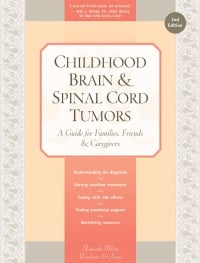Childhood Brain and Spinal Cord Tumors
When are transplants necessary?
Some clinical trials use tandem PBSCTs as front-line treatment for some primitive neuroectodermal tumors, high-risk embryonal tumors, germ cell tumors, and malignant tumors diagnosed in very young children. Although preliminary data from some of these studies are encouraging, tandem transplants are still considered experimental in most, but not all, situations.
If a PBSCT has been recommended for your child or teenager, you may want to get a second opinion before proceeding. In addition, you may want to ask the neuro-oncologist some or all of the following questions:
- What are all the treatment options for my child’s tumor?
- For my child’s type of tumor, history, and physical condition, what chance for survival does she have with a transplant? What are her chances with other treatments?
- What are the risks? Explain the statistical chance of each risk.
- What are the benefits of this type of transplant?
- What will be my child’s likely short-term and long-term quality of life after the transplant?
- Where would my child receive this type of transplant?
- What portion of the procedure will be outpatient versus inpatient?
- What is the average length of stay in the hospital for children undergoing this procedure?
- What are the anticipated and rare complications of this type of transplant?
- Will my child have to take medicines after the transplant? For how long?
- What are the side effects of these medicines?
- Is this transplant considered to be experimental, or is it the current standard of care?
Table of Contents
All Guides- Introduction
- 1. Diagnosis
- 2. The Brain and Spinal Cord
- 3. Types of Tumors
- 4. Telling Your Child and Others
- 5. Choosing a Treatment
- 6. Coping with Procedures
- 7. Forming a Partnership with the Treatment Team
- 8. Hospitalization
- 9. Venous Catheters
- 10. Surgery
- 11. Chemotherapy
- 12. Common Side Effects of Chemotherapy
- 13. Radiation Therapy
- 14. Peripheral Blood Stem Cell Transplantation
- 15. Siblings
- 16. Family and Friends
- 17. Communication and Behavior
- 18. School
- 19. Sources of Support
- 20. Nutrition
- 21. Medical and Financial Record-keeping
- 22. End of Treatment and Beyond
- 23. Recurrence
- 24. Death and Bereavement
- 25. Looking Forward
- Appendix A. Blood Tests and What They Mean
- Appendix C. Books and Websites

